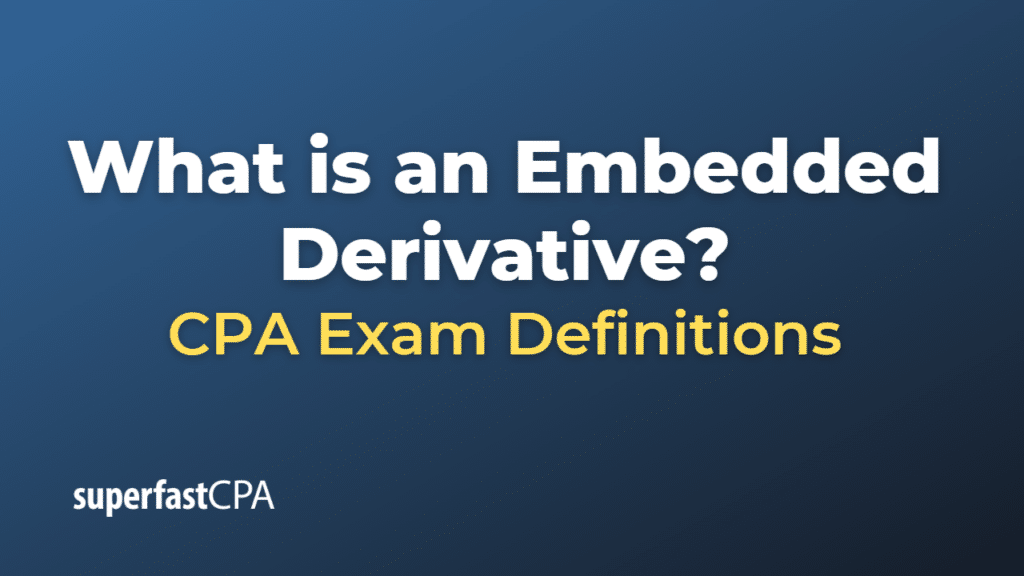Embedded Derivative
An embedded derivative is a component of a financial contract that possesses some characteristics of a derivative instrument, but it’s not a standalone derivative. Essentially, it’s a provision within a contract that causes the cash flow of the contract to change in response to changes in a variable, such as an interest rate, commodity price, credit rating, or foreign exchange rate.
Embedded derivatives are often found in structured products or hybrid securities. The most common example might be a convertible bond, which is a bond (debt instrument) that includes an embedded derivative giving the holder the option to convert the bond into a specified number of shares of the issuer (equity instrument).
According to accounting standards such as IFRS 9 and ASC 815 (formerly FAS 133), if the economic characteristics and risks of the embedded derivative are not closely related to those of the host contract, the embedded derivative needs to be separated from the host contract and recognized separately on the balance sheet at its fair value.
The aim of these requirements is to reflect the risk associated with the derivative component of the contract in the financial statements, which might not be apparent if the derivative and host contract were accounted for together.
However, separating and valuing embedded derivatives can be complex and requires significant judgement. It also affects the reported earnings and financial position of the entity, as changes in the fair value of the separated embedded derivative are usually recognized in profit or loss.
Example of an Embedded Derivative
Company A issues a bond with a face value of $1,000 with a 5-year maturity period and a fixed interest rate of 4%. However, this is not an ordinary bond: it contains a provision that allows the bondholder to convert the bond into a specific number of Company A’s common shares anytime before the bond’s maturity. This conversion feature is an embedded derivative.
In this case, the bond (host contract) and the conversion feature (embedded derivative) are two distinct components. The bond pays interest to the bondholder, while the conversion feature gives the bondholder the right to convert the bond into Company A’s common shares at a pre-determined ratio.
Here’s why the conversion feature is considered a derivative:
- It has an underlying value – the price of Company A’s common shares.
- Its term is for a specific period – until the bond’s maturity.
- It does not require an initial net investment or requires smaller net investment than would be required for other types of contracts that would be expected to have a similar response to changes in market factors.
- It can be settled at a future date.
This embedded derivative (the conversion option) will need to be separated from the host contract (the bond) and accounted for separately in Company A’s financial statements if it’s not closely related to the host contract.
The conversion feature’s value will change based on the price of Company A’s common shares, and these changes will be reflected in the company’s profit or loss, ensuring the company’s financial statements accurately represent its financial position and performance.













